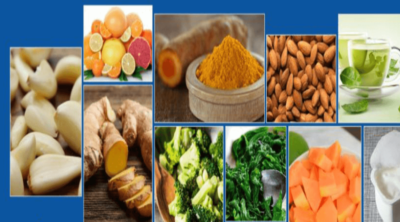
Like many other fruits in nature, pear nutrition facts are also something that is given medical importance. They are rich in vitamin C and have zero fat content. Read on to find out what are these facts from the article mentioned below.
Commonly known as the pear, Pyrus communis is a pomaceous fruit which is edible and can be eaten either raw or cooked. This is a green or yellow colored, round shaped fruit which turns narrow at the stalk and has a sweet juicy taste. Even though there are various types of pears grown across the world, the Pyrus communis is known to be the most common type consumed. This one of the most popular fruits, has its roots in Europe and Asia and there are various races cultivated and used for different culinary purposes. As much as it is used to prepare delicious food recipes, it is also used for a number of nutritional benefits, as it is a rich source of some very essential nutrients.
Nutritional Facts of Pears
The varieties found in pears are mainly judged by their paper thin skins which are usually have color differences like green, red, brown, yellow and a combination of two colors. Pears are very rich sources of vitamin C, vitamin K, dietary fiber and copper. There are many other nutrients present in these pear trees depending on their varieties and types. These nutrients are soluble and insoluble fiber, carbohydrates, sodium, sugar, vitamins, fatty acids, calories, minerals, amino acids, etc.
| Carbohydrates | 15.46 g |
| Protein | 0.38 g |
| Sugars | 9.80 g |
| Dietary fiber | 3.1 g |
| Thiamin (Vitamin B1) | 0.012 mg |
| Riboflavin (Vitamin B2) | 0.025 mg |
| Niacin (Vitamin B3) | 0.157 mg |
| Pantothenic acid (Vitamin B5) | 0.048 mg |
| Vitamin B6 | 0.028 mg |
| Folate (Vitamin B9) | 7 μg |
| Vitamin C | 4.2 mg |
| Iron | 0.17 mg |
| Calcium | 9 mg |
| Magnesium | 7 mg |
| Potassium | 119 mg |
| Phosphorus | 11 mg |
| Zinc | 0.10 mg |
Asian Pear
The Asian pear is one of the many varieties of this fruit and it is also known as the Nashi pear, Japanese pear, apple pear, etc., and has very strong resemblance to an apple. They are very sweet and have strong aroma, and ripen faster that the other varieties in this family. Asian pears are also known to be extremely nutritious and 1 medium-sized pear, which is about 122 g in weight has the following nutrients. The total fat that this pear contributes to are 2%, total carbohydrates are 4% with 13 g where; 6 g are dietary fiber and 8.6 g of sugars, and the total proteins are about 0.6 g.
Bartlett Pear
The Bartlett pears are small stout green colored pears which are slightly sour in taste. They however take time to ripen and turn yellow when they are ready to be eaten. They get very soft when ripe and may develop bruises, which is why they need to be handled with extra care. When you consider 148 g of this pear, which is about 1 cup, there are no fats observed in it. The nutrition count for this pear is; 1 mg of sodium, 23 g of total carbohydrates with 5 g dietary fiber and 15 g sugar, and 1 g proteins. It consists of 10% vitamin C, 1% calcium, iron and vitamin A each.
Red Pear
Another juicy and tasty pear used for baking, canning or poaching, the Red pear is also known as the Red Bartlett pear. The color of the fruit is browning red and has a very sweet aroma when it ripens. As every other variety of pear, this one also bruises very easily, thus you need to be careful while transporting it. A medium-sized pear which is 166 g is fat-free and has 25 g of carbohydrates, 1 g protein, 10% vitamin C, 2% calcium and iron, and no vitamin A.
Bosc Pear
The Bosc pear is a larger sized pear which doesn’t bruise as much as the other varieties. This one of the fruits that has a dark yellow, or brown color even when they are not ripe. The Bosc pear nutrition data is for a medium Bosc pear which is 166 g, there are no fats present, 25 g of carbohydrates, 1 g protein, 0% vitamin A, 10% vitamin C and 2% of iron and calcium. These nutritional facts are the same as the Red pears with a few differences in the composition of other nutrients.
Pears are best eaten raw, in salads and in fruit baskets, so make the most out of this gift of nature.

